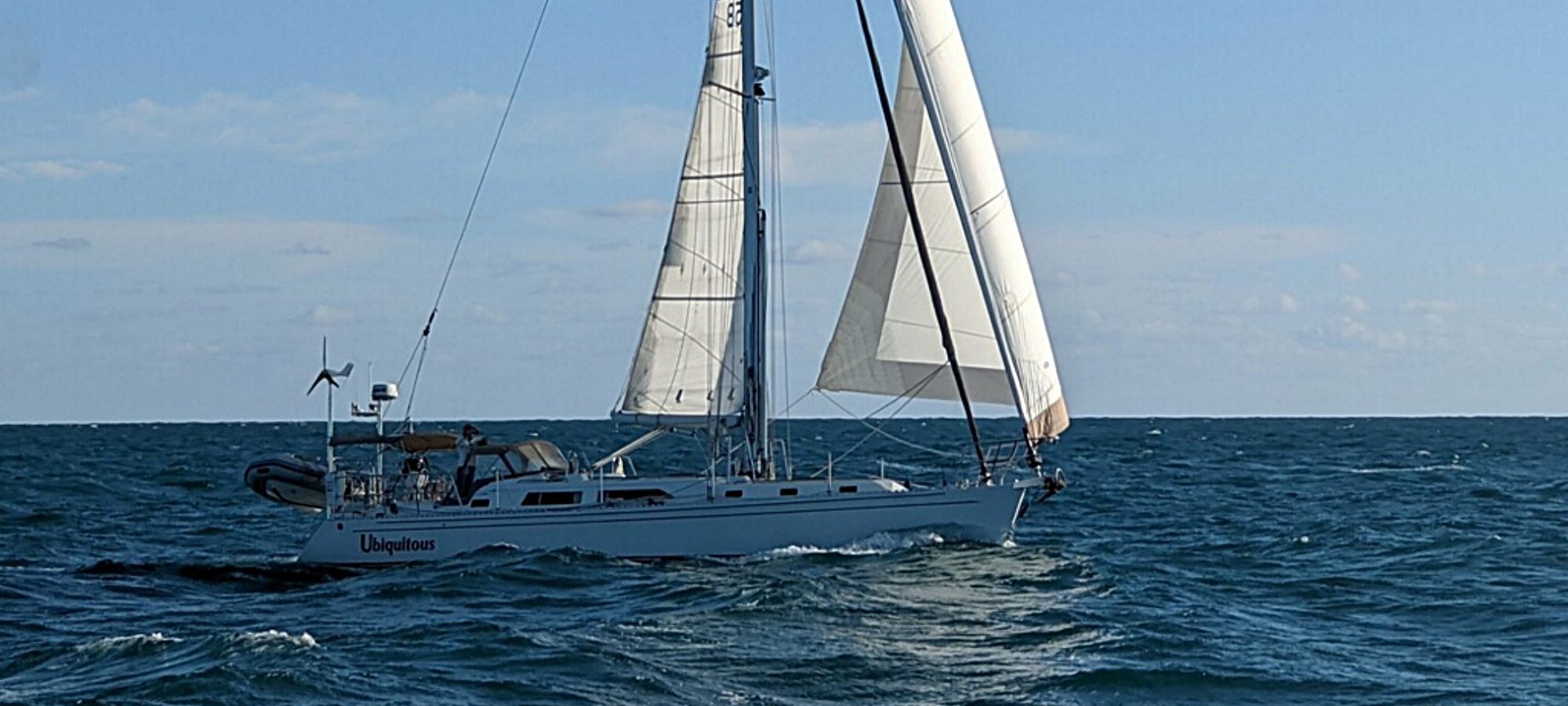“If you want your boat to stay pretty and polished, then keep it at the dock. If you’re bumping into stuff, that just means you’re getting out there.”
His name was Larry. He was an old salt living there on a custom, metal-crafted, beast-of-a-boat in the Port St. Joe Marina, and I liked his attitude. In “blog time,” we had just survived the horrendous “smack aground” (TM) on the way into Port St. Joe and our third Gulf Crossing, so I thought it would be a fine time to step aside for an informative “Side-Bar” on the Have Wind blog to discuss a topic that seems to come up frequently during our discussions with fellow cruisers–a strange and sometimes deadly phenomenon in the Gulf of Mexico known as the “Bathtub Effect.”
We met Larry soon after we docked at PSJ and were talking to him about what most fellow cruisers talk about when they first meet–common mishaps, mistakes, misadventures and the reasons, despite all those mis-es, we all seem to keep at this whole cruising thing. In the process of making our way back up the coast from the Florida Keys, Phillip and I had definitely been “out there,” and we had definitely bumped into our fair share of things. Not intentionally, and usually not expectedly, but Larry was right, it’s just going to happen. It’s kind of like breaking a few eggs to make a cake. I mean, you want the cake, don’t you?
We also got to chatting with him about our numerous treks across the Gulf of Mexico and some of our more noteworthy adventures out there, and he shared a few as well–like the time they broke their tiller off and he and his wife had to heave-to in what he called the “Middle Ground” of the Gulf while waiting for a storm to pass. That got us to talking about this great body of water Phillip and I tend to spend a lot of our days in–the Gulf of Mexico. While it is certainly no ocean, and I don’t think crossing it results in any form of trans-something travel, it is definitely a “little” body of water that you don’t want to underestimate. And, it’s something I’ve been wanting to address on the blog for a while.
Oceans are undeniably treacherous, yes, and dangerous in their size alone. They’re huge! If something happens in the middle of the ocean, there’s a good chance it will take days, perhaps weeks, for help to arrive, assuming it ever does. But, they’re also HUGE! Which means the waves in the ocean can and may often be larger, but they are also smoother and more spaced out. Many long-time cruisers have suffered their most dire cruising catastrophes in the Gulf where the waves beat at you with startling frequency and charge simultaneously from seven different directions. The minute the words came out of Larry’s mouth, I felt like he’d been reading my mind.
“Ahhhh … the bathtub effect.”
He said it with a knowing nod and thoughtful massage of his scraggly chin. The words reverberated in me. The bathtub. That’s what we called it! I’m sure there are plenty of technical terms like wave periods, frequency, culmination of forces, all kinds of real sciency stuff like that, but what it ultimately results in is–The Bathtub Effect.
So, six-foot waves are never fun. We can all agree on that. Your boat heels sharply over to one side as the wave lifts it up and then heels just as sharply back the other way as the wave passes under. Left to right. Port to starboard. But, six-foot waves that come every twelve seconds are far more comfortable than those that come every three. The period of the wave is what really makes the sea state feel “choppy.”
Relatively speaking, the Gulf of Mexico is a fairly small body of water, compared to the many oceans at least, that grace our beautiful planet.
It’s good to keep a healthy perspective.
But, being a “small” body of water, means the waves don’t really have enough space to dissipate. When there are swells of different sizes coming from all different directions (some from the west coast of Florida, from Texas, from Mexico, and some created in the very center of the Gulf by local winds), they all tend to bump into each other, creating an extremely choppy, confused sea state. Also, when crests of waves from two different paths come together, they can culminate, for a moment, and create one wave that’s as tall as two. A super wave if you will. Weather in the Gulf also tends to be very localized causing for quick changing conditions that can make for uncomfortable and scary passages. Chop and change. Chaos and confusion. Here’s a pretty good example:
Note the seconds between the waves and the varying directions. (And, please do note this is a big … honking … ship, not a small–relatively speaking–sailboat). First it’s up and down. Then side to side. That’s why we call it the bathtub effect. Chaos from every angle. Constant and ricocheting. Frequent and fierce. The Gulf has claimed many tillers, dinghies, masts and men. It may be small but the risk is big. Phillip and I try to plan our offshore passages to avoid rough seas and harsh weather, but sometimes, despite the best-laid plans, you’re going to find yourself out there in the nasty middle of it. We are thankful every time we make a successful Gulf crossing, but proud as well. It is an accomplishment and, despite the incumbent risk, it’s worth it. We’re getting out there. We’re bumping into things. And, we’re enjoying every bite of the cake.
Happy 2015 followers! Here’s to hoping you all find yours this year, and eat it too!





